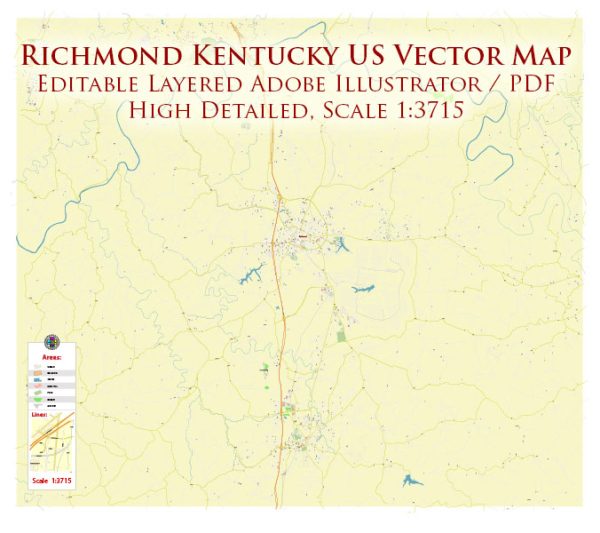Richmond, Kentucky, has a rich history that reflects the broader patterns of urban development in the United States. The city’s growth and transformation over the years can be traced through various phases, including its founding, expansion, economic shifts, and social changes.
- Early Settlement and Founding (Late 18th Century): Richmond was founded in 1798 by Colonel John Miller on land donated by the Colonel’s father, Colonel William Miller. The city was named after Richmond, Virginia, reflecting the influence of early settlers from that region. During its early years, Richmond served as a center for trade, with agriculture playing a crucial role in the local economy.
- Antebellum Period and Civil War (19th Century): Like many towns in the South, Richmond experienced the impact of slavery and the agricultural economy. The Civil War (1861-1865) had a profound effect on the city, as it was a strategic point during the conflict. The Battle of Richmond (1862) took place nearby, leaving a lasting mark on the community.
- Post-Civil War and Industrialization (Late 19th to Early 20th Century): After the Civil War, Richmond, like much of the country, underwent industrialization. The arrival of the railroad in the late 19th century facilitated transportation and trade. Industries such as tobacco processing and manufacturing began to flourish, contributing to the city’s economic development.
- 20th Century Economic Changes: Throughout the 20th century, Richmond continued to adapt to economic changes. The city diversified its economy, and educational institutions, such as Eastern Kentucky University (founded in 1906), became important contributors to the community. The expansion of infrastructure, including roads and utilities, played a role in shaping the urban landscape.
- Post-World War II Suburbanization and Growth: The post-World War II era witnessed suburbanization trends that affected many American cities, and Richmond was no exception. The development of suburbs and the expansion of the highway system transformed the city’s demographic and spatial dynamics. This period saw a shift from an agrarian economy to a more diversified economic base.
- Contemporary Challenges and Development: Like many cities, Richmond faces contemporary challenges, including urban renewal, infrastructure maintenance, and community development. Efforts to preserve historic structures and revitalize downtown areas have become priorities for many communities, including Richmond.
- Cultural and Community Developments: Richmond’s cultural and community life has evolved over the years. Events, festivals, and community initiatives have played a role in shaping the city’s identity. The preservation of historic sites and the promotion of cultural heritage contribute to a sense of continuity and pride among residents.
Understanding Richmond, Kentucky’s history of urban development involves recognizing the city’s resilience, adaptability, and response to larger historical trends. As in many American cities, the narrative is one of change, growth, and the ongoing efforts to balance progress with preservation.


 Author: Kirill Shrayber, Ph.D.
Author: Kirill Shrayber, Ph.D.